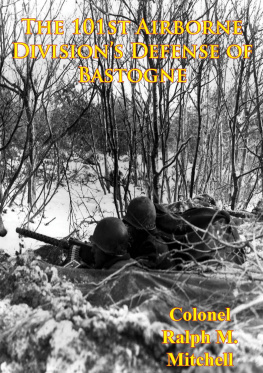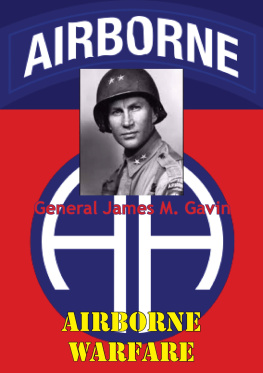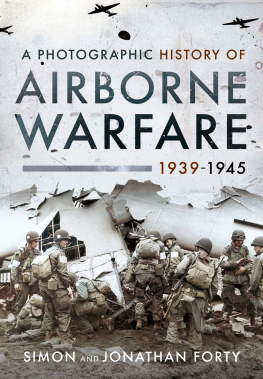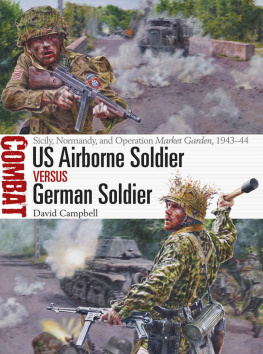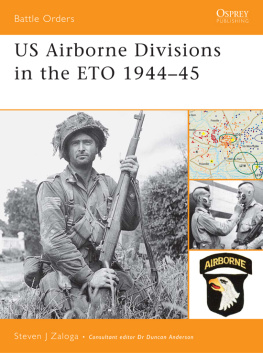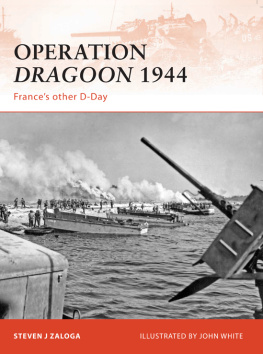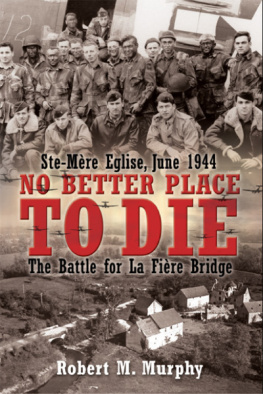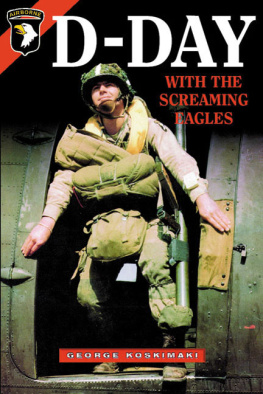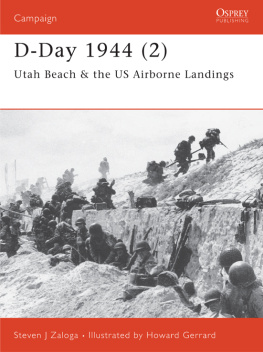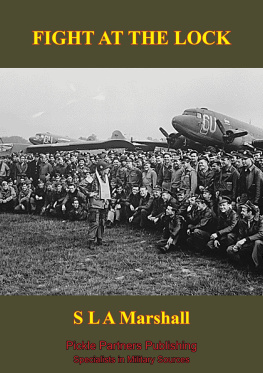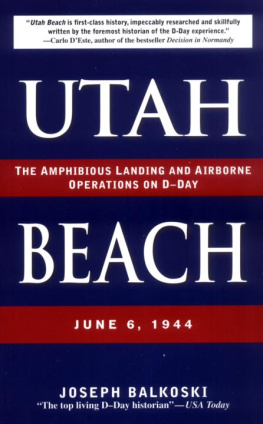This edition is published by PICKLE PARTNERS PUBLISHING www.picklepartnerspublishing.com
To join our mailing list for new titles or for issues with our books
Or on Facebook
Text originally published in 1944 under the same title.
Pickle Partners Publishing 2013, all rights reserved. No part of this publication may be reproduced, stored in a retrieval system or transmitted by any means, electrical, mechanical or otherwise without the written permission of the copyright holder.
Publishers Note
Although in most cases we have retained the Authors original spelling and grammar to authentically reproduce the work of the Author and the original intent of such material, some additional notes and clarifications have been added for the modern readers benefit.
We have also made every effort to include all maps and illustrations of the original edition the limitations of formatting do not allow of including larger maps, we will upload as many of these maps as possible.
REGIMENTAL UNIT STUDY NUMBER 4
THE FORCING OF THE MERDERET CAUSEWAY AT LA FIERE, FRANCE AN ACTION BY THE THIRD BATTALION 325TH GLIDER INFANTRY
CHARGE ACROSS THE CAUSEWAY
(These facts were developed at a battalion critique in LEICESTER, ENGLAND, on 2-3 August, 1944, with all surviving officers and NCOs present. In the narrative, the witnesses are self-identifying.)
The Battalion was already in motion toward the Merderet and approaching the railway crossing when the order for the attack came down the column of marching men. It passed from man to man so that no one would misunderstand the nature of the assignment: They were to attack across the Causeway, and once started, they were to keep moving. Company G, being first in the column, would lead the assault, followed by Companies E and F. After that, in the formation, came the heavy machine guns, the 81 mm mortars (6 of them) and the other elements of Headquarters Company. The column came to an exposed space at the railroad crossover but the men all double-timed through there and the Battalion made it without anyone being hurt.
While the order was still being relayed to the rearward files, the preparatory barrage fire opened, and the artillery and other supporting weapons continued their pounding of the western bank as the column moved downgrade along the winding road which led to the River. It was a preparation loosely coordinated in part, yet fully satisfying in its over-all effect. Along the river bank, Capt R. D. Rae and his badly-punished group of men from the 507th Regiment had been having some hours of extra anxiety. Rae had been told early that morning that there should be an attempt to force the Causeway by storm and that either his Company (reinforced) or a battalion from 325th Regiment would draw the assignment; it was a question whether the 325th column would arrive in time from CHEF DU PONT. They sweated it out through the early hours, knowing that if the other force was not on hand by 1000, they would have to jump-off. {1} Periodically, Rae got reports of the upcoming column's progress; it began to look hopeful. At 1030, Rae heard the barrage open and he knew that the 325th's men were moving in to attack. He had already deployed his own men in firing position close to the water's edge, with the greater part of them disposed to the left of the bridge and along a small rise of ground to right of it. This was according to Gen Gavins instructions; Gavin had also sent word to Rae to keep heads-up when the attempt was made to force the Causeway, and if 325th's attack seemed to waver, he was to charge forward with his own group, and take over the assault. {2} Now as the Division's light guns and the 155s of the 345th [Field Artillery] Battalion, 90th Division began to speak from the ground between La Fiere and Ste Mre Eglise, the roar and rattle above the swamp of the Merderet mounted rapidly. They were joined by the artillery pieces and machine guns of Company A, 746th Tank Battalion, which after coming cautiously forward under cover of the artillery attack had put its tanks into hull defilade among the farm buildings on the rising ground just above Raes fire line. The action was hardly begun before the German artillery replied. Shellfire shook the ridge at La Fiere and crashed among the buildings next the river it seemed to be coming from directly across the swamp and about 1000 yards away. {3} But the precise location of the guns was unknown to the American force and there was no effective counterbattery fire; the American artillery continued to concentrate its attack against the built-up area along the opposite shore. From these same buildings cane a small arms fire of such intensity that it "beat like hail" against the American side of the river, {4} threatening anyone who tried to approach the bridge. Raes men had already joined this action; every rifle and machine gun was bearing on the likely-looking targets on the far shore. Yet there was no apparent lessening of the volume and deadliness of the enemy fire.
Company G, 325th, had kept on moving toward the bridge, hearing, yet not feeling, this blast. Until the last 200 yards or so, the road came at the bridge from an angle; the road embankments were high and sufficiently protecting. And the Company had something else to worry about. For the attack across the Causeway, the column had been promised an adequate covering fire of smoke. The men figured that would be pretty important, since they would be charging right into the teeth of the enemy. So they had looked anxiously for the smoke; they had seen a few smoke shells fall, then nothing more. The opposite bank was perfectly clear. The men felt pretty let down about it. {5}
The Company turned the last bend and the road straightened out to the bridge. Instantly machine gun fire swept over them from beyond the Merderet and the men jumped for cover into the ditches on both sides of the road. Capt Sauls saw his men go down, but he figured that for the moment it was useless to get them on their feet again; the stretch of road between him and the bridge was simply a slot of fire and he was sure that if he tried to take his men that way, the attack would crumple before reaching the Causeway. {6} Neither he nor his men had to strain their imaginations to glimpse the danger; in among them in the ditches and along the embankments were about 20 dead from 507 th most of them victims of the artillery. Sauls' men, looking forward, could see enemy mortar and artillery fire beating around the bridge. Sauls wondered if there wasn't a side road leading into the bridge; he talked to a couple of 507 officers; they could tell him only that they'd been taking a beating on this ground for two days and that there were a "hell of a lot of Germans" on the other side of the Merderet. Leaving his company in the ditches, he made a wide reconnaissance around to the left. It took him over about the same ground where Capt Schwartzwalder's men had gone on D Day and he found the side road which twisted through the cluster of high-walled farm buildings nearest the river. Capt Raes men were deployed over this portion of the shore; so many of their dead were strewn over the road that Sauls had to ask the help of a 507 sergeant in moving some of the bodies so that he could get forward to where the side road turned into the Causeway and so complete his reconnaissance. The road seemed suited to his purpose; it approached the bridge at almost a right angle; the ground was flat and the road would have been under full observation from the far shore had it not been that a shoulder-high stone wall screened it during the last 40 yards. The cover was almost perfect; at one point an enemy shell had breached the wall for about seven yards and this meant that every man would have an instant of exposure in moving up to the last assembly point. One of the enemy machine guns seemed to be playing its fire around this breach but Sauls decided that the risk was worth taking. He ordered the Company to follow the way he had come. Most of the Company made it without too much difficulty, bounding one man at a time past the gap in the wall. Once past it, the men packed in tight together, hugging the stone wall, so that the first two platoons were compressed into a single line of men not more than 55 yards long. There they waited, crouched over. The American artillery fire continued: the guns were supposed to hold on the opposing shore until the last minute and the fire was then to roll on back as the infantry charged the Causeway. The enemy artillery was falling just short of the wall; it didn't bother Sauls' men but it landed with unusual consistency along the narrow strip of river bank where Raes men were deployed. Enemy small arms fire quite a lot of it was beating against the wall and bouncing off into the farm buildings beyond the Company. Maj Arthur W. Gardner, who had just taken over the Battalion a few minutes before, came forward to see whether Sauls' men were ready. They were but they were still fretting about the smoke and wondering whether it would come.


